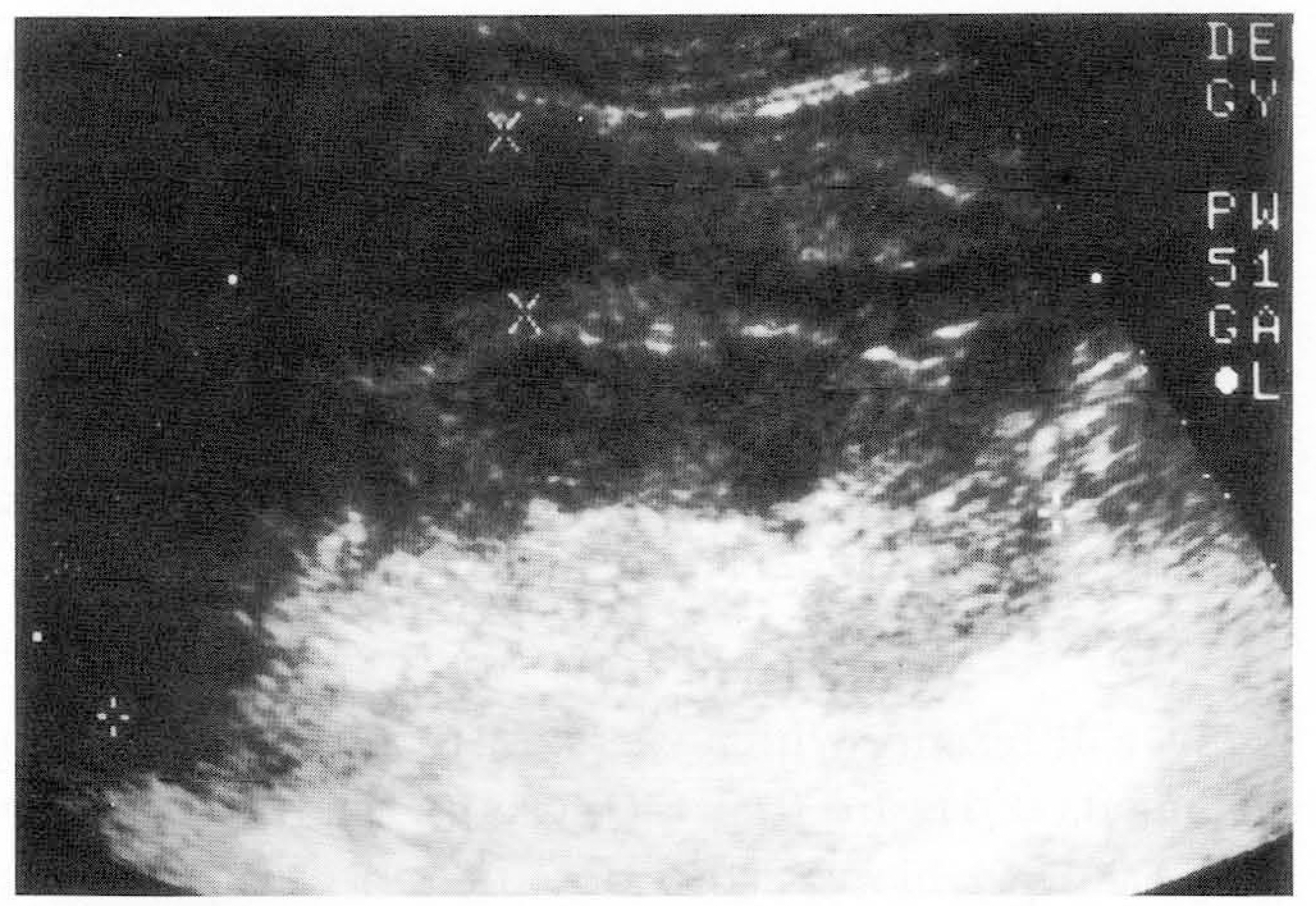J Korean Radiol Soc.
1998 Mar;38(3):511-516. 10.3348/jkrs.1998.38.3.511.
Comparison of Various Needles in Renal Biopsy: Clinical and Animal Studies
- Affiliations
-
- 1Department of Radiology, Seoul National University, College of medicine.
- KMID: 2201411
- DOI: http://doi.org/10.3348/jkrs.1998.38.3.511
Abstract
-
PURPOSE: To compare the efficacy of 14 gauge(G) Vim-Silverman needle biopsy with that of 16G automatic gunbiopsy for kidneys and to determine the optimal needle size for renal biopsy.
MATERIALS AND METHODS
Weretrospectively reviewed the pathologic and medical records of 119 (110 native, 9 allograft) patients who hadundergone 14G Vim-Silverman needle biopsy and 71 (34 native, 37 allograft) who had undergone 16G automatic gunbiopsy. The number of retrieved glomeruli and post-biopsy complications were compared between the two groups. Exvivo renal biopsies of a dog were performed using an automatic gun mounted with 14G-20G needles and the numbers ofretrieved glomeruli were compared.
RESULTS
The number (mean+/-standard deviation) of retrieved glomeruli perbiopsy in native/allograft/total kidneys was 32.1+/-20.9/24.0+/-15.2/31.5+/-20.6 in the 14G Vim-Silverman needlebiopsy group, and 26.9+/-16.2/14.3+/-10.1/20.9+/-14.9 in the 16G automatic gun biopsy group. In the dog, the numberof retrieved glomeruli per biopsy was 17.2+/-6.3/9.2+/-3.9/5.7+/-4.5/3.9+/-2.6 in the 14G/16G/18G/20G groups,respectively.
CONCLUSION
Although significantly more glomeruli were retrieved in the 14G Vim-Silverman needlebiopsy group, the number retrieved in the 16G automatic gun biopsy group was sufficient for adequate pathologicinterpretation. Experimental study suggests that when an 18G automatic gun is used, sufficient glomeruli areretrieved.
Keyword
Figure
Reference
-
1.Manaligod JR., Pirani CL. Renal biopsy in 1985. Semin Nephrol. 1985. 5:237–239.2.Kark RM. The development of percutaneous renal biopsy in man. Am J Kid Dis. 1990. 19:585–589.
Article3.Burstein DM., Korbet SM., Schwartz MM. The use of the automatic core biopsy system in percutaneous renal biopsies: a comparative study. Am J Kid Dis. 1993. 22:545–552.
Article4.Pirani CL. Evaluation of kidney biopsy of specimens. In Tisher CG, Brenner BM, eds. Renal pathology with clinical and functional correlations. Philadelphia: Lippincott. 1989. 11–42.5.Doyle AJ., Gregory MC., Terreros DA. Percutaneous native renal biopsy: comparison of a 1.2-mm spring-driven system with a traditional 2-mm hand-driven system. Am J Kid Dis. 1994. 23:498–503.
Article6.Mostbeck GH., Wittich GR., Derfler K, et al. Optimal needle size for renal biopsy: in vitro and in vivo evaluation. Radiology. 1989. 173:819–8221.
Article7.Belitsky P., Gupta R. Minicore needle biopsy of kidney transplants: a safer sampling method. J Urol. 1990. 144:310–311.
Article8.Bolton WK. Nonhemorrhagic decrement in hematocrit values after percutaneous renal biopsy. JAMA. 1977. 238:1266–1268.9.Dowd PE., Mata JA., Crow A, et al. Ultrasound guided percutaneous renal biopsy using an automatic core biopsy system. J Urol. 1991. 146:1216–1217.
Article10.Hopper KD., Baird DE., Reddy VV, et al. Efficacy of automated biopsy guns versus conventional biopsy needles in the pygmy pig. Radiology. 1990. 176:671–676.
Article11.Corwin HL., Schwartz MM., Lewis EJ. The importance of sample size in the interpretation of the renal biopsy. Am J Nephrol. 1988. 8:85–89.
Article12.philip B., Rekha G. Minicore needle biopsy of kidney transplants: a safer sampling method. J Urol. 1990. 144:310–311.13.Parker SH., Hopper KD., Yakes WF., Gibson MD., Own bey JL., Carter TE. Image-directed percutaneous biopsies with a biopsy gun. Radiology. 1989. 171:663–669.
Article14.Mladinich CR., Ackerman N., Berry CR., Buergelt CD., Longmane J. Evaluation and comparison of automated biopsy devices. Radiology. 1992. 184:845–847.15.Bogan ML., Kopecky KK., Holladay AO., Filo RS., Leapman SB., Thomalla JV. Needle biopsy of renal allografts: comparison of two techniques. Radiology. 1990. 174:273–275.
Article16.Hoppe FE., Hager DA., Poulos PW., Ekman S., Lindgren PG. A comparison of manual and automatic ultrasound-guided biopsy techniques. Vet Radiol. 1986. 27:99–101.
Article
- Full Text Links
- Actions
-
Cited
- CITED
-
- Close
- Share
- Similar articles
-
- Ultrasound-Guided Renal Biopsy with Automated Biopsy Gun Technique: Efficacy and Complications
- A case of delayed perirenal hematoma after percutaneous renal biopsy
- Comparison of Endoscopic Ultrasound Biopsy Needles for Endoscopic Ultrasound-Guided Liver Biopsy
- US-Guided Percutaneous Renal Biopsy by Using 18 G Automatic Biopsy Gun in Diffuse Renal Disease
- Cytologic Features of Renal Cell Carcinoma: Clear Cell, Granular Cell and Oncocytoma




